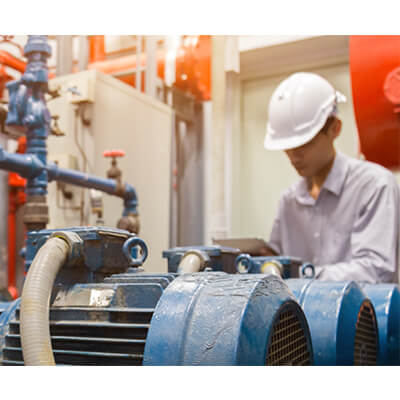From microchips and chocolate chips to mining trucks, manufacturers produce an incredible range of products, machinery and equipment. The production processes used to make these products are equally diverse.
When it comes to asset management and maintenance, business risks and costs vary as well. At one end of the spectrum are capital-intensive businesses where a machine or system failure can lead to injuries, lost or delayed orders, and have a significant impact on the bottom line. Company leaders in these industries keep a watchful eye on the condition of their assets and they allocate significant amounts in their annual budget to maintenance work. At the other extreme are operations – like light assembly – that use tools and equipment that can be easily fixed or quickly replaced with minimal expense when there’s a malfunction.
To better understand the maintenance risks and opportunities in your business, here are some of the questions that manufacturing leaders should be asking their CFO, plant managers and business analysts:
Maintenance Risks to Profitability and Growth
Q1: Where do we have risks for an extended equipment breakdown?
- What is the impact to customers?
- Can the financial impact be calculated?
- What are we doing to prevent such a breakdown?
Q2: What is our return on invested capital (ROIC) and how does it compare to the best-in-class industry average?
Q3: In the context of a business sale or acquisition, does our current maintenance strategy, equipment performance and overall condition of assets have a positive or negative impact on valuations?
Maintenance Optimization Opportunities
Q4: If current maintenance practices were executed more effectively and asset performance improved in multiple areas, what impact would the gains have on quality, productivity, capacity, and gross margin?
- What’s being done to capture this opportunity?
Q5: If maintenance practices became more predictive—and less reactive—reducing overall maintenance costs and increasing throughput, what impact would that have on the plant’s annual operating plan and budget?
- Would we increase or decrease our maintenance spend?
- Would we need to adopt new technologies?
- What are the benefits of these new technologies?
- What would be required to support these new technologies?
- What training and development would be required to support them?
Getting the answers to these questions can lead to some eye-opening conversations, especially in the middle of the maintenance requirements/risks/costs spectrum. Here, maintenance practices and performance can vary significantly between competitors using similar production technology, or even between similar operations within a company. The differences come down to priorities and where plant managers think their time is best spent.
What if Your Equipment Reliability Could Be Better?
Consider a plant that operates in “run to failure mode,” with the maintenance team mostly reacting to breakdowns as they occur. What happens when a line goes down unexpectedly for an extended period? Can production be shifted to another line or another facility? What impact would that have on costs and customer service levels?
Few U.S. manufacturers these days have much excess capacity available for picking up the slack from any unexpected, long-term breakdowns. Many, in fact, are running full out and some are telling us that they could sell more if their equipment reliability could improve. In this situation any improvement in maintenance performance will free up capacity that can be used to produce and sell more product and increase revenues without requiring any new capital equipment investments. How much could that be worth to your company?
The CEO of one of our clients knows exactly how much. He has made maintenance and uptime one of his top priorities at every level because he knows exactly how much a one-point change in overall equipment effectiveness (OEE)* is worth across his network of 40-plus factories.
These are just a few reasons why, if you haven’t been paying much attention to maintenance practices and performance in your plants lately, it’s probably time to start asking some questions. As we wrote about previously, a thorough evaluation of your current maintenance practices can help uncover the financial significance of these risks and opportunities.
* Operating Equipment Effectiveness (OEE) is calculated by multiplying equipment availability x performance x quality. OEE is usually used as a measure of manufacturing effectiveness where machine availability or uptime is largely attributed to production scheduling and changeover times. In contrast, the maintenance department’s performance in most plants is measured relative to their budget. Are they spending on or above budget? However, when it comes to availability—and how much time is allocated to planned downtime—maintenance has a direct impact on performance. A well-executed maintenance program can easily boost OEE by one or two points, which can have a major impact on a plant or a company’s financial performance.





